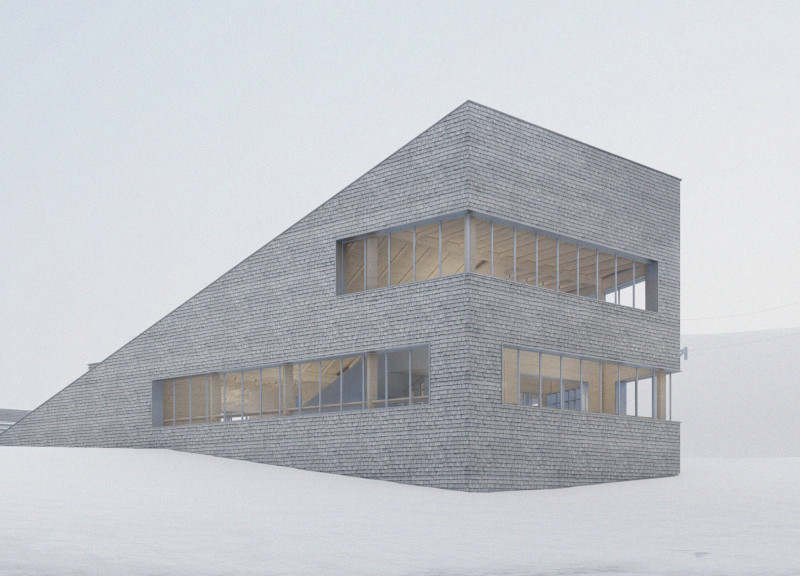5 key facts about this project
This project serves a multifaceted function, acting as both a residential space and a community hub. It is equipped with various facilities that cater to the needs of its inhabitants, fostering social interaction and engagement. The careful arrangement of spaces reflects an understanding of how architecture can influence daily activities and interactions among residents. Each area is meticulously designed, with attention paid to the flow of movement and the experience of light throughout the day. The incorporation of large windows allows for an abundance of natural light, enhancing the comfort and livability of the project.
Key architectural details play a crucial role in defining the character of the building. The facade incorporates a dynamic use of materials, balancing functionality and aesthetic appeal. Natural stone, wood, and glass work together to create a textured surface that resonates with the surrounding environment. The choice of materials not only contributes to the visual language of the design but also helps in achieving energy efficiency and durability. Local sourcing of materials showcases a commitment to sustainability, reducing transportation emissions while supporting the regional economy.
Unique design approaches are evident throughout the project. For instance, the integration of green roofs and living walls not only enhances the building’s ecological footprint but also provides residents with access to nature, even in urban settings. These innovative features contribute to improved air quality and biodiversity, making a positive impact on local ecosystems. Additionally, the design embraces open floor plans that promote flexibility and adaptability, accommodating the evolving needs of its occupants.
Landscaping is another significant element that amplifies the overall design. Thoughtful planting schemes around the property create inviting outdoor spaces, enhancing the user experience. Pathways and communal areas are strategically placed to encourage movement and socialization among residents, reinforcing the project’s intent to build a sense of community.
Furthermore, the use of passive design strategies maximizes energy efficiency, minimizing reliance on mechanical systems. Orientation and strategic shading devices mitigate heat gain, contributing to a comfortable indoor climate year-round. Rainwater harvesting and solar energy integration are additional features that underscore the project’s commitment to sustainable living.
Ultimately, this architectural project stands as a testament to the potential of modern design to not only fulfill functional requirements but also to foster environmental stewardship and community connection. The comprehensive architectural plans and design elements showcase a refined balance of aesthetics, functionality, and sustainability. As you explore the project presentation, you will gain deeper insights into the architectural designs, sections, and ideas that make this endeavor noteworthy in contemporary architecture. Engaging with these details will provide a fuller understanding of the innovative approaches and thoughtful planning that underpin this significant architectural project.


























